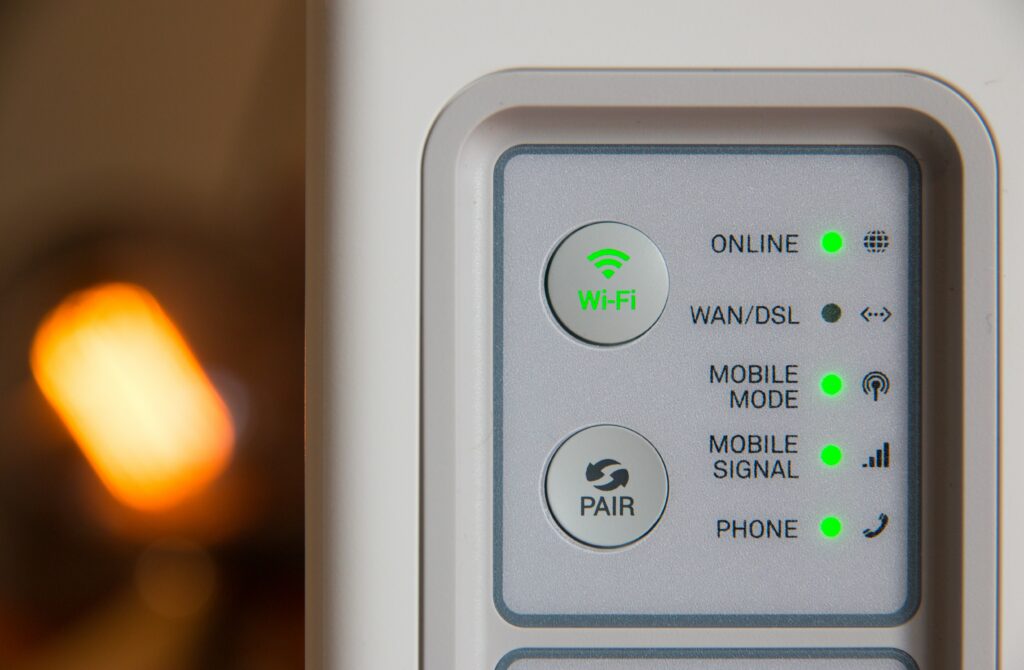In the current age of data-hungry tech, be it streaming, gaming, or knuckling down in the home office, internet speed is everything. Looking to host a 4K streaming watch party for a major sports contest? It’d be faster to walk to Silverstone than watch F1 when your broadband is still stuck in the pits.
Knowing your average internet speeds throughout the home can be essential for troubleshooting technical issues or checking if your broadband is keeping up with the unstoppable march forward of technology.
Fortunately, such things as internet speed tests exist and are a simple answer to all of the above. Read on to find out what they are, how they work, and how you can use them to your advantage:
What are they?

Despite seeming complex from the surface, internet speed tests are remarkably simple. Speed tests are a simple measure of your broadband’s connection strength and how effectively it will be able to execute certain tasks like downloading or uploading data.
There are countless different outlets offering tests that generally fulfil the same purpose with different presentations but Ookla, Fast.com, and Broadband Speed Checker are always good places to start. You can even check out our own speed test here!
How do they work?

So what exactly are the tests measuring for and how does it work? Internet Speed Tests work by sending a signal to a test server that relays back to your device, measuring the time it takes to do so in milliseconds to produce the score. From this test, you can measure the following:
- Download speed: This is the test indicating how quick your broadband can transfer data from the internet to your device and is measured in megabytes per second or Mbps
- Upload speed: The other side of the coin to download speed. This measures how quick data can be transferred from your device to the internet and is also measured in Mbps.
- Ping: Ping is a great measurement of your broadband’s reliability. Measured in milliseconds (ms), ping is the speed at which your data is being delayed. This means the lower the ping, the more robust the connection.
How do I know if my score is good?

The only way to truly classify a test score as ‘good’ is if the results are reflective of what is promised by your provider within your broadband package. If you’re hitting download speeds of 12 Mbps when paying for a 30 Mbps copper-based superfast connection, this is not indicative of a good score.
Even if your scores correlate with what you’ve paid for, internet speed tests may indicate that your broadband simply isn’t able to keep up with your tech. If your broadband is running on Superfast networks, you’re relying on Victorian-age infrastructure that is unsuitable for the strains of the data-hungry digital age.
In comparison, cutting-edge full fibre broadband can deliver speeds of a staggering 11x faster than Superfast connections with speeds of up to 1,000 Mbps – the level of strength needed to download a full HD movie in just four minutes or stream ultra-HD content on up to six devices at once!
Why are they important?

In a time where technology, be it for work or leisure, becomes increasingly demanding on our internet connections, knowing how capable your broadband is can be a powerful tool.
Most crucially, it can help inform you when you’re getting the most from your service, and when it’s time for you to upgrade. Between uninterrupted entertainment from your purpose-built gaming-PC rig, to cracking down on your productivity while working remotely, a hyperfast connection bolstered by rock-solid reliability is crucial for future-proofing your premise.
That’s why we’re proud to be rollout out our full-fibre networks across rual, hard-to-reach areas across the East of England following a combined £146m private investment. Our progress is well underway and have already made headway in achieving our pledge to connect 500,000 premises by 2027.
Find out if our network is already available in your area or if we’re planning to connect your village here.





